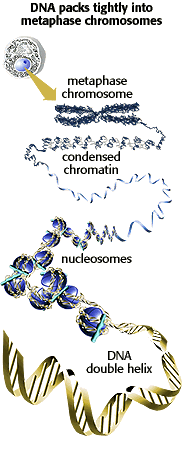
|
What is DNA Mitochondrial DNA Molecuar Evolution D-loop Cytochrome b Phylogeography |

|
What is DNA Mitochondrial DNA Molecuar Evolution D-loop Cytochrome b Phylogeography |
 |
The previous exercise dealt with differentiation, and specifically with the events leading to
differential gene activity. In molecular terms, this process involves regulation using DNA as a
primer molecule for the selective synthesis of RNA. DNA primed RNA synthesis is termed
"transcription." Transcription is a complex series of reactions which involve the use of an RNA polymerase enzyme, known as transcriptase. If the reaction occurs in reverse, that is with an RNA primer synthesizing DNA, the process is known as reverse transcription, and the enzyme is reverse transcriptase. This latter process is important for RNA virus replication in general, and is most significant when examining oncornagenic virus. Oncornagenic virus are RNA-containing virus that are also causal agents for some forms of cancer (primarily in birds). Reverse transcription is also important in the development of amphibians, and in the process of gene amplification.
|
Human mitochondrial genome, for example, the complete sequence of its 16,569 nucleootides was sequenced in 1981. Several surprising features are found:
1. Unlike other genomes, nearly every nucleotide appears to be part of a coding sequence. There is very little room left for regulartory DNA sequences.
2. Only 22 tNAs from cytosol are required for mitochondrial protein synthesis.
3. Four of 64 codons have different "meanings" from those of the same codons in other genomes.
These organelle genes are maternally inherited in many organisms. When animals carrying type A mitochondrial DNA are crossed with animals carrying type B, the progeny contain only the maternal type of mitochondrial DNA. we can discuss the evolution history inferred in this organelle.
Generally speaking, mitochondrial DNA has protein-coding gene, rRNA, tRNA, and no intron inserted. With its maternal inheritance property, we can trace how the mtDNA in species disperse generation to generation. MOLECULAR EVOLUTION is a growing field since 1986. More and more evolution problems is resolved in molecular level. By doing so, we can understand the limitation of the morphology and ecology level.
Molecular Evolution encompasses two areas of study:
1. The evolution of macromolecules: includes the rates and patterns of change in the genetic material and its encoded products during evolutionary time and the mechanisms responsible for such changes.
2. The molecular phylogeny: reconstruct the evolutionary history of genes and organisms, as inferred from molecular data.